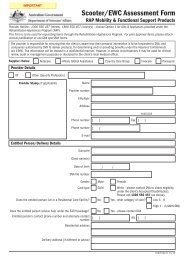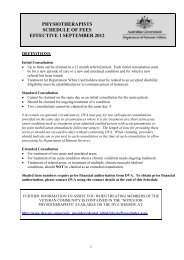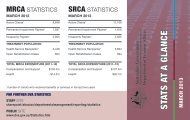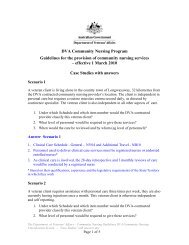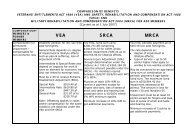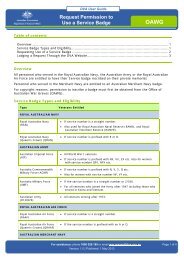SANDAKAN HISTORY DOC - Department of Veterans' Affairs
SANDAKAN HISTORY DOC - Department of Veterans' Affairs
SANDAKAN HISTORY DOC - Department of Veterans' Affairs
You also want an ePaper? Increase the reach of your titles
YUMPU automatically turns print PDFs into web optimized ePapers that Google loves.
January 1945 saw the Japanese on the defensive throughout<br />
that vast Pacific and Asian territory they had conquered so<br />
swiftly in late 1941 and early 1942. To the Japanese, it must<br />
have seemed only a matter <strong>of</strong> time before the Allies struck at<br />
Borneo. Fearing that this invasion might occur in the Sandakan<br />
area, they made provision to move the POWs over 260<br />
kilometres westward to Ranau where they might prove useful<br />
as supply carriers in the mountains. A track, or rentis, was cut<br />
by local labour through the low-lying swamps and jungle to<br />
the south <strong>of</strong> the Labuk River and its tributaries—the Dusan,<br />
the Kolapsis, the Muanad, the Pandan Pandan, and the<br />
Mandorin—up into the dense rainforest <strong>of</strong> the Maitland<br />
Range, past Paginatan village into the Crocker Range (which<br />
formed the foothills <strong>of</strong> Mount Kinabalu) and on to a highland<br />
plateau at Ranau. In the swamp lowlands this track was made<br />
<strong>of</strong> logs and proved dangerous to walk on. It was <strong>of</strong>ten easier to<br />
wade through the swamp itself. Through the mountains the<br />
track became narrow, slippery and, in many places, steep.<br />
On 26 January 1945 the POWs were informed that a party<br />
consisting <strong>of</strong> approximately 455 Australians and British were to<br />
leave Sandakan for another part <strong>of</strong> Borneo where there was<br />
plenty <strong>of</strong> food. The prisoners were divided into nine groups<br />
which left the camp progressively between 28 January and 6<br />
February. Bill Sticpewich remembers them leaving:<br />
None <strong>of</strong> them were fit. They were all suffering from beriberi and<br />
malnutrition. They were all issued by the Japs with crude rubber boots<br />
but nobody could wear them. Some <strong>of</strong> them had their own boots but more<br />
than sixty per cent <strong>of</strong> them were bootless.<br />
In this state the marchers set <strong>of</strong>f westward into the swamp and<br />
the jungle.<br />
23



